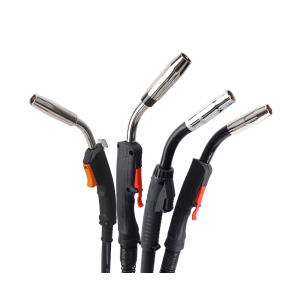Welding is a fundamental process in fabrication, essential for joining metals and creating structures of various shapes and sizes. Understanding the different types of weld patterns used in fabrication is crucial for ensuring the integrity and quality of welded joints. In this article, we’ll delve into the common types of weld patterns encountered in fabrication processes
At the heart of fabrication lies the weld pattern, a visual representation of the weld bead’s formation and arrangement. Weld patterns are influenced by factors such as welding technique, material type, joint design, and welding parameters. By examining these patterns, fabricators can assess the quality of welds and make necessary adjustments to improve strength and durability.
One of the most prevalent weld patterns in fabrication is the fillet weld. Fillet welds are commonly used to join perpendicular or nearly perpendicular surfaces, forming a triangular cross-section between the two pieces. This type of weld pattern provides excellent strength and is versatile in various applications, from structural steelwork to sheet metal fabrication.
Another commonly encountered weld pattern is the groove weld. Groove welds are utilized to join two pieces with a gap between them, requiring the deposition of filler metal into the groove. This weld pattern offers superior strength and is often employed in heavy fabrication projects such as bridge construction and pressure vessel manufacturing.
In addition to fillet and groove welds, spot welds are prevalent in fabrication, especially in automotive and aerospace industries. Spot welds involve the localized application of heat and pressure to join overlapping metal sheets. This weld pattern is characterized by its small size and high-speed application, making it ideal for mass production processes.
Moreover, seam welds play a significant role in fabrication, particularly in creating continuous joints along the length of cylindrical or curved structures. Seam welds are formed by the continuous deposition of filler metal along the seam, resulting in a uniform and strong bond. This weld pattern is commonly used in the fabrication of pipes, tanks, and pressure vessels.
Beyond these primary weld patterns, various specialized weld patterns exist to meet specific design and performance requirements. For instance, plug welds are employed to join two pieces in a lap joint configuration, with the filler metal deposited through a hole in one of the components. Similarly, slot welds are utilized to join overlapping components by filling a slot or channel with filler metal.
In fabrication, the choice of weld pattern depends on factors such as joint geometry, material thickness, loading conditions, and project specifications. Fabricators must select the most suitable weld pattern to ensure structural integrity, aesthetic appeal, and cost-effectiveness.
Furthermore, advancements in welding technology have led to the development of innovative weld patterns and techniques, such as robotic welding and laser welding. These technologies offer enhanced precision, productivity, and repeatability, revolutionizing the fabrication industry and expanding the possibilities for complex and intricate designs.
In conclusion, weld patterns are the building blocks of fabrication, shaping the strength, durability, and functionality of welded joints. By understanding the common types of weld patterns and their applications, fabricators can achieve superior quality and efficiency in their projects. Whether it’s a fillet weld, groove weld, spot weld, or seam weld, each weld pattern plays a vital role in bringing fabricated structures to life.

